Vaccinating a nation: can Biden manage America’s biggest health project?

Roula Khalaf, Editor of the FT, selects her favourite stories in this weekly newsletter.
Across the US, vast “freezer farms” are popping up — warehouses containing row after row of ultra-cold storage equipment designed to house a vaccine against Covid-19 when one is approved.
These warehouses are the most visible sign of a new supply chain set up in just a few months as public officials and private companies prepare for the imminent arrival of one or more potentially world-changing drugs, at least one of which will have to be stored at temperatures colder than an Arctic winter.
The smooth functioning of this cold supply chain is vital if the US is to be able to offer vaccines to everyone who wants one, as the federal government has promised by next summer.
For President-elect Joe Biden, the vaccine plan is arguably the most important issue that awaits him. His reputation as president will probably be decided in large part by whether he can provide vaccines to enough people to help end the pandemic in a country which has recorded more than 12.2m cases and nearly 257,000 deaths.


“This is the most difficult distribution challenge we have ever faced,” says Dusty Tenney, chief executive of Stirling Ultracold, which makes some of the very cold freezers needed to store the Pfizer/BioNTech vaccine at temperatures of -70C. “It is like doing Amazon’s one- or two-day delivery, but using ultra-low temperature products that have never before made it on to the market.”
Distributing a coronavirus vaccine will be a daunting task for every government around the world, especially for developing nations where it is often far harder to guarantee that doses will remain at the kind of low temperatures required for the likely two first vaccines. Oxford university and AstraZeneca’s vaccine, which has received Operation Warp Speed funding, can be stored at normal fridge temperatures, however.
In the US, the task will be made harder not just by the country’s rugged and often sparsely-populated terrain. Other challenges include a hostile political backdrop where outgoing President Donald Trump has spent the past three weeks contesting the election results, agreeing only on Monday night to start allowing contact between administration officials and Mr Biden’s transition team.
If it goes wrong, the vaccine rollout could resemble the debacle that characterised the US response to the early stages of the virus, when tests malfunctioned and states bid against each other in the scramble to procure personal protective equipment for healthcare workers.
It could also sow the seeds of the next great American political divide. Already Democrats are accusing the Trump administration of failing to do enough to prioritise vaccinating minority groups, while rural voters who predominantly support Mr Trump are also worried they will miss out.
But if it goes smoothly, allies of Mr Trump hope it could help rescue his reputation for handling the pandemic. And it is even more likely to determine the fortunes of Mr Biden, whose first term will be dominated by the virus and its aftermath.
Angela Rasmussen, a virologist at Columbia University, says: “The Food and Drug Administration has largely got a handle on the approval process; the big worry now for Joe Biden is: how does he distribute a vaccine, how does he do so equitably, and how does he persuade people to get it?”
Mr Biden himself encapsulated his task last week, warning: “How do we get over 300m Americans vaccinated? What’s the game plan? It’s a huge, huge, huge undertaking.”
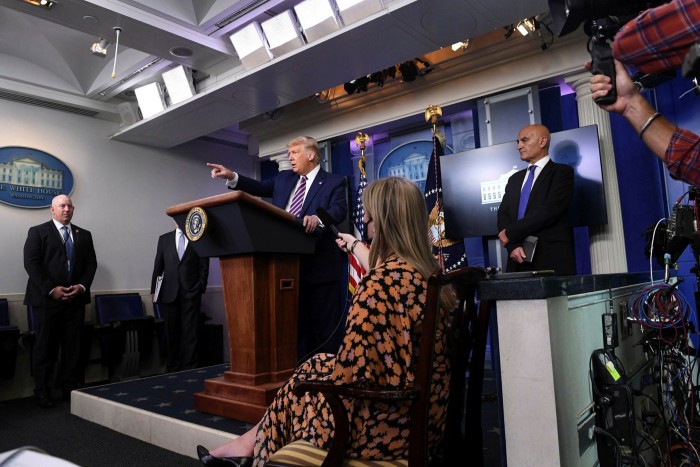
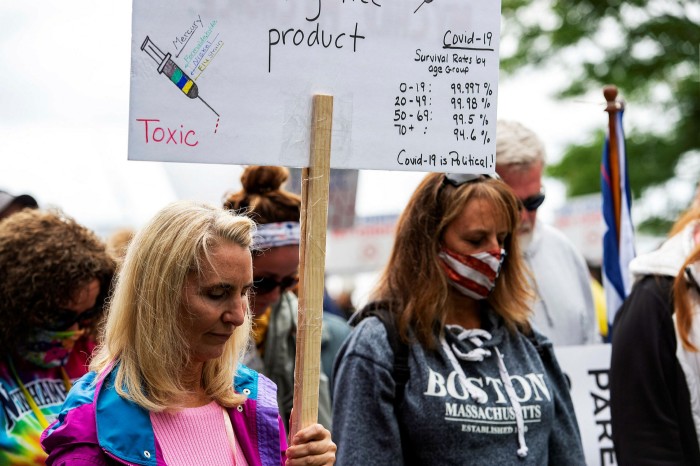
Fight for supplies
After months of work, the Trump administration published its distribution plans in October. Officials say they will be able to provide vaccines for all vulnerable people — likely to be frontline healthcare workers and older people with underlying illnesses — by the end of the year; all older people by the end of January; and everyone by early summer.
Under those plans, Operation Warp Speed — the vaccine development project the president set up in May — will use a piece of software created by technology company Palantir to track supply and demand in real time. The app, known as Tiberius, promises to give federal officials access to localised data on everything from the location of doses of the vaccines to how many people live in care homes in a given area.
The administration is paying healthcare logistics company McKesson to oversee the delivery of many of the vaccines, although not the Pfizer one which the pharmaceutical company itself is responsible for — albeit with government money and assistance.
Meanwhile, hundreds of companies, from haulage firms to freezer providers to producers of shipping containers, are bidding for a patchwork of local and federal contracts to help deliver doses. Not only does the vaccine need to arrive in the right place and in the right condition, but so do millions of needles, glass storage vials and PPE for those administering it.
Francesco Incalza, president for Europe, the Middle East and Africa for refrigerated transport company Thermo King, says of the global distribution task: “If the early vaccines are two doses each, we are talking about transporting 5bn of them in the first year — that would need 8,000 Boeing 777 flights.”
Trump officials say the plans, which have been jointly drawn up by the health department and the Pentagon, involve military-level precision. “The logistics are being worked [out] to the minute, in an army-combat approach,” says Moncef Slaoui, head of Operation Warp Speed. “We have tabletop exercises — which are kind of rehearsals — every Friday, in which we identify areas that need more specific solutions. I feel very comfortable that it is incredibly well worked out.”
But Mr Slaoui’s task is to get the vaccine to state-designated distribution hubs: it is up to the states themselves to get them to individuals, through a network of hospitals, community centres and high-street pharmacies.
Vaccination in numbers
$25bn
Sum president-elect Joe Biden promises to spend on vaccine manufacturing and distribution
8,000
Estimated number of flights that will be needed to distribute 5bn doses globally in the first year
42%
Percentage of Americans planning to take a coronavirus vaccine, according to YouGov
This is what Biden advisers say worries them most: that a lack of direction from the federal government risks repeating the situation in spring, when states tried to buy the same items of PPE with little guidance from the federal government, leaving gaps in certain areas. Already there are signs that this is happening.
North Dakota is one of a handful of states that have been running pilot schemes for how vaccine distribution would work, even carrying out dummy runs using doses of flu vaccines.
The state, which has been hit harder than almost anywhere in the world by the virus, has bought four ultra-cold freezers to store the Pfizer vaccine, ignoring the advice of the Centers for Disease Control and Prevention. North Dakota has also bought its own dry ice machine to equip shipping containers in which it will transport doses even to its most rural communities.
But as a vaccine approval has got closer, supplies have been getting harder to come by. “Local providers are having problems getting needles and vials because the federal government is buying them all up,” says Molly Howell, the state’s immunisation programme manager. “There is also definitely a shortage of gloves and N95 masks.”
Dry ice is another concern. Earlier this year there were national shortages of the product, which is a byproduct of gasoline manufacturing, as lockdowns brought cities to a halt and crushed demand for petrol. The US Compressed Gas Association insists there will be enough to get through the winter, but another round of lockdowns could yet put that in peril.


Fair distribution
Another concern of the incoming Biden team is that minority communities, many of which have been hit hardest by the disease, will not be prioritised. Though a government-commissioned report has recommended making sure black people in particular get the vaccine early, the Trump administration is leaving it up to states to decide exactly how they will allocate their doses.
In a year which has seen mass uprisings against police violence towards black people, many fear any approach that would further entrench America’s political and cultural divisions.
Andrew Cuomo, the governor of New York, warned this month: “[The Trump administration is] basically going to have the private providers do it and that’s going to leave out all sorts of communities that were left out the first time when Covid ravaged them.” In response, Mr Trump threatened not to distribute the vaccine to Mr Cuomo’s state at all.
Latest coronavirus news
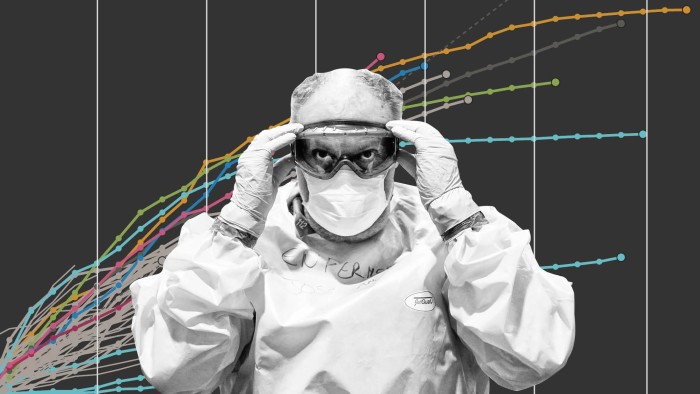
Follow FT's live coverage and analysis of the global pandemic and the rapidly evolving economic crisis here.
Helene Gayle, who co-authored a government-commissioned report on how to distribute a coronavirus vaccine fairly, is one of a number of experts whom Mr Biden’s transition team has consulted in recent weeks. She says: “The planning is just getting started, and there hasn’t been the national leadership this requires. States have been left to themselves.”
Mr Biden has promised to spend $25bn on vaccine manufacturing and distribution, hoping to plug the gaps they say have been left by the Trump plan. But properly identifying those gaps has been made harder by the fact that the president-elect’s advisers have been denied access to administration officials for weeks after the election.
The delay had prompted warnings from senior officials, including Mr Slaoui, who said earlier this month: “It is a matter of life and death for thousands of people.”


Anti-vaxxer resistance
Even if all that works — if the vaccine is transported safely and in sufficient numbers from factories, to distribution hubs, to local clinics and pharmacies — whether people will agree to have the jab is another question.
An hour outside Bismarck, the capital of North Dakota, where Ms Howell has been toiling away on her state’s distribution plans, Alexis Wangler has been watching the race to get a drug approved with growing concern. Ms Wangler lives in Linton, a small town with about 1,000 residents. Like most of the state, it has been ravaged by coronavirus.
Ms Wangler’s husband believes he had the virus, having suffered fatigue and a loss of smell and taste. His grandmother definitely did, and ended up in hospital with the disease. Her co-worker’s husband is still in hospital — though he is now out of intensive care and no longer receiving supplemental oxygen. Nearly one in 10 North Dakotans have now tested positive for the disease since the start of the pandemic, and 14 per cent of those currently being tested are coming back positive.
However, none of this is enough to persuade Ms Wangler to line up for a shot. “Vaccine makers have said they are in a race to produce it, so that means corners will most likely be cut,” she says. “I’m going to take my chances with my god-given immune system, which has a way better chance of protecting me.”
Ms Wangler is not alone — only 42 per cent of Americans currently plan to take a coronavirus vaccine, according to YouGov, thanks to widespread safety concerns. Some of those are committed anti-vaxxers, many more are simply worried that this approval process has been rushed. That is far below the 70 per cent of people who experts think need to be vaccinated before enough of the population is resistant to bring the spread of the virus to a standstill.
If Mr Biden wants to achieve herd immunity through a vaccine, he will have to persuade people like Ms Wangler. The problem is she, like most of her neighbours, did not vote for him, and does not trust him on healthcare issues — especially after he and his running mate Kamala Harris warned about vaccine safety concerns during the election campaign.
Despite being one of the states that has suffered most from the pandemic, with more than 72,000 cases, North Dakota’s votes for Mr Trump increased at the last election.
Nor is the state a one-off. An analysis by the broadcaster NPR last week found that Mr Trump increased his share of the vote in 68 out of the 100 counties with the highest Covid-19 death rates per capita — a trend seen across states that voted both Republican and Democrat.
These are the voters who feel they have been left behind by the political class in Washington, and experts warn their alienation with mainstream politics is only likely to grow if they feel they are being bypassed while the rest of the country plots an exit from the pandemic.

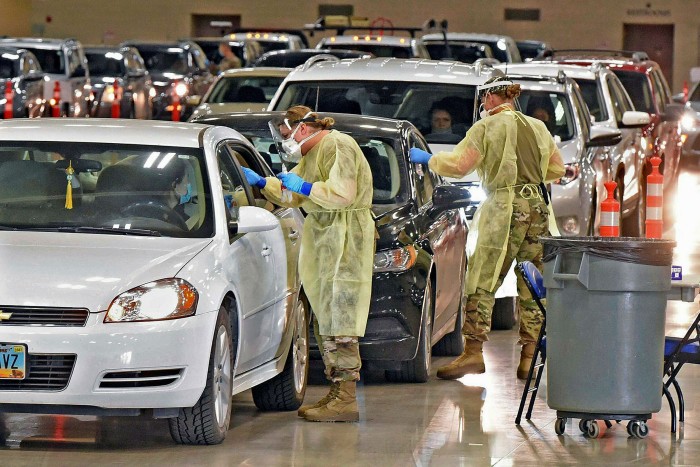
A clear departure
Mr Biden’s allies promise he will be the country’s “healer-in-chief”, bringing the country together after a divisive four years under Mr Trump. But the phrase could also be used literally. If Mr Biden wants to be remembered for more than beating Mr Trump, he will have to manage one of the biggest, most complex and most politically-charged healthcare projects ever undertaken by the US government.
“The only comparative thing the healthcare system does right now is roll out a national flu vaccine every year,” says Eric Topol, a cardiologist and professor at Scripps Research Institute, a medical think-tank. “But that is not compulsory, it is not as difficult to handle and is nowhere near as important as a coronavirus vaccine will be.”
Those who have helped shaped Mr Biden’s distribution plans insist the president-elect will be up to the task.
“The fact is that you have a president-elect who has made controlling the pandemic one of his four priorities — that in itself is very different from what we have at the moment,” says Dr Gayle. “Everything is a clear departure from the previous approach.”
Swamp Notes
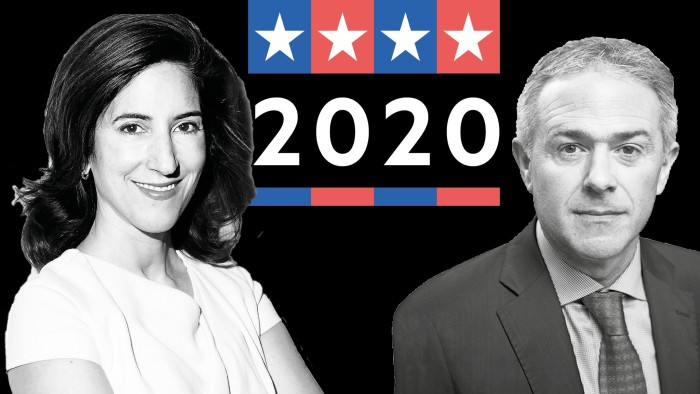
After a historic 2020 election, stay on top of the biggest themes driving US politics, business and markets from Washington, New York and beyond with Rana Foroohar and Edward Luce. Sign up here
Comments